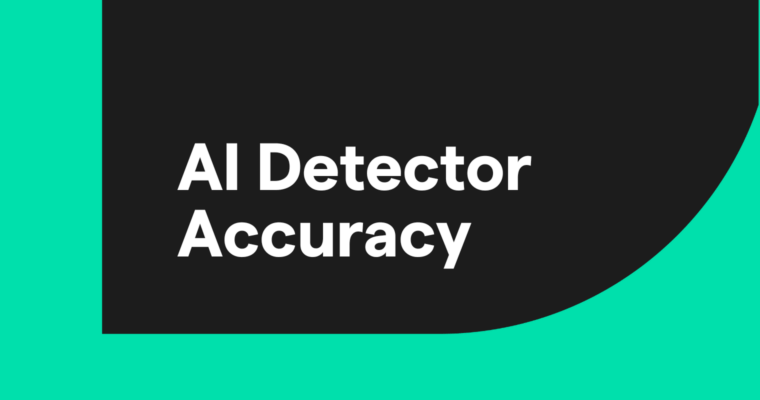
In today’s world, it’s common to hear the terms artificial intelligence and machine learning mentioned, often interchangeably. Understanding the difference between artificial intelligence (AI) and machine learning (ML) is crucial, especially for nonexperts, as it clarifies the value and potential applications of AI and ML, as well as their role in driving innovation across industries.
Table of contents
What is artificial intelligence?
Relationship between AI and ML
Real-world applications of AI and ML
What is artificial intelligence?
Artificial intelligence (AI) is a technology designed to replicate how the human mind learns and functions. Unlike traditional computer programs, AI can solve problems using algorithms or logical reasoning. Most modern AI systems are capable of learning and adapting independently, without human input. AI includes tools that range in complexity from simple chatbots to self-driving cars.
Types of AI
AI is generally divided into three categories based on its ability to generalize and simulate human intelligence.
- Narrow AI: This is specialized AI for specific tasks, such as a recommendation algorithm for a streaming platform.
- General AI: AI that has the ability to understand, learn, and use knowledge across a wide range of subjects, similar to humans. These include AI tools like ChatGPT and Google Gemini.
- Superintelligent AI: This includes hypothetical AI that can exceed human capabilities and outperform humans in nearly every domain.
What is machine learning?
Machine learning (ML) is a subset of AI that uses data and statistics to allow computers to learn from numerous examples and without explicit programming. With sufficient, high-quality data and the right learning algorithm, the computer picks out patterns in the training data to learn new capabilities. Common algorithms include linear and logistic regression, decision trees, neural networks, and support vector machines, each serving different purposes depending on the data and the desired outcome.
Types of machine learning
ML models are categorized by the way in which they learn patterns from training data.
- Supervised learning: The model learns from labeled data to make predictions, such as forecasting housing prices based on square footage. Examples include email spam filtering and predicting loan defaults.
- Unsupervised learning: The model tries to identify patterns in unlabeled data, such as customer segments. Examples include customer segmentation and the detection of network anomalies.
- Reinforcement learning: The agent learns by interacting with its environment to maximize cumulative rewards. Examples include robotics or AI systems designed to play games, like AlphaGo.
Other approaches extend or combine the three main types of ML. In semi-supervised learning, the model trains on a small amount of labeled data with a larger pool of unlabeled data to make training more efficient. In self-supervised learning, models learn to generate their own labels using unlabeled data, which is useful when labeled data is scarce or unavailable.
The relationship between AI and ML
AI and ML are distinct yet interconnected concepts. Understanding the differences between the two is crucial for understanding how they function individually and together.
Essentially, ML is a subset of AI that provides methods for AI systems to adapt and learn from their experiences. For example, virtual assistants like Siri or Google Assistant are AI systems that use ML algorithms to understand speech patterns and output relevant responses over time.
It’s important to note that, while all ML falls under the AI umbrella, not all AI involves machine learning. AI can also incorporate other approaches, such as rule-based systems and expert systems, which do not rely on learning from data.
| Artificial intelligence (AI) | Machine learning (ML) | |
| Dependence | Includes various technologies, including ML, but can function without ML | A subset of AI, specifically focused on learning from data |
| Human involvement | Often needs humans to give instructions or set rules | Requires minimal human intervention after setup; learns and improves automatically |
| Scope | Broad scope, from simple tasks to advanced reasoning | Narrower focus within AI; teaching models to learn from data |
| Technology basics | Uses a diverse set of technologies, such as ML, natural language processing (NLP), computer vision, and robotics | Primarily relies on math models and data to find patterns and make decisions |
Now that you understand the difference between AI and ML, let’s explore some of the many applications of these technologies.
Benefits of AI and ML
AI and ML offer numerous benefits across industries, improving efficiency, enabling deeper data insights, providing personalization, and helping to reduce costs.
Efficiency and automation
AI and ML can perform repetitive and labor-intensive tasks far more quickly and efficiently than humans. For example, AI and ML can automate important but time-consuming tasks like data entry or document classification. This boost in efficiency can free up human workers to focus on more strategic and creative activities, leading to significant time savings and higher productivity.
Data insights
AI and ML are incredibly effective at uncovering patterns in large, complex datasets that humans might not easily detect. Using sophisticated algorithms, ML models can find correlations, forecast future trends, and mine actionable insights from data. This data-driven decision-making capability is highly useful when data complexity is high, which is common in fields like finance, marketing, and healthcare.
Personalization
By analyzing individual preference data, AI and ML can provide personalized experiences for users. For example, AI systems are used to power movie suggestions on Netflix and product recommendations on Amazon. This personalized approach drives customer engagement and increases customer satisfaction.
Cost reduction
AI and ML can lower operational costs by reducing the need for human labor in certain areas. For example, chatbots minimize the need for large support teams by providing automated customer service. In manufacturing, AI-powered predictive maintenance solutions can identify equipment issues before they become problematic, helping businesses avoid costly downtime and repairs.
Challenges with AI and ML
Despite their numerous benefits, AI and ML also create challenges that must be addressed to fully harness their potential.
Data dependency
To perform well, AI and ML systems need large amounts of high-quality data. Without sufficient data, models struggle to learn patterns accurately, resulting in poor performance or unreliable predictions. In fields where data collection is difficult or where privacy concerns limit data availability, this requirement can become a major barrier to successful implementation and adoption of AI and ML systems.
Bias and fairness
AI and ML systems can inherit biases from training data, leading to discriminatory and unfair outputs. Systems trained on biased data can have negative, real-world impacts, especially in areas such as hiring or law enforcement, where fair decision-making is crucial. Using diverse datasets and implementing bias mitigation techniques can help AI and ML systems to remain unbiased and fair.
Complexity
Developing, maintaining, and interpreting AI and ML models is a complex endeavor and specialized discipline. AI and ML models are notoriously difficult to understand, particularly deep learning systems, which can behave as a “black box,” or a system whose inputs and outs are visible but not its internal mechanism. This complexity can make the adoption and implementation of AI solutions challenging if an organization doesn’t have experts on hand.
Ethical concerns
Like any new, powerful technology in any era, AI and ML also create significant ethical challenges around privacy, surveillance, and job displacement. Training models on user data can invade personal privacy, while the automation of jobs may lead to unemployment in sectors previously immune to such disruption. Balancing the benefits of AI and ML with ethical considerations is crucial to ensure that society achieves the greatest benefits without experiencing undue harm.
Real-world applications of AI and ML
The transformational impact of AI and ML is undeniable across most industries, but the ones seeing the most notable short-term impact include healthcare, banking, and manufacturing.
Healthcare
In healthcare, AI and ML are assisting with critical tasks, like predicting patient outcomes and diagnosing diseases. For example, AI tools are used to analyze medical images to help doctors detect disease early. AI can also help medical professionals create personalized treatment plans based on patient data.
Banking
The banking sector uses AI and ML to improve security and efficiency. For example, AI is used to detect fraud by identifying and flagging unusual transaction patterns in real time. Banks are also using ML models to analyze consumer financial data as part of the credit scoring process.
Manufacturing
AI and ML are used in manufacturing to predict equipment failure and optimize maintenance. AI systems continuously monitor equipment for indications of impending failure, which helps manufacturers prevent unexpected downtime.






